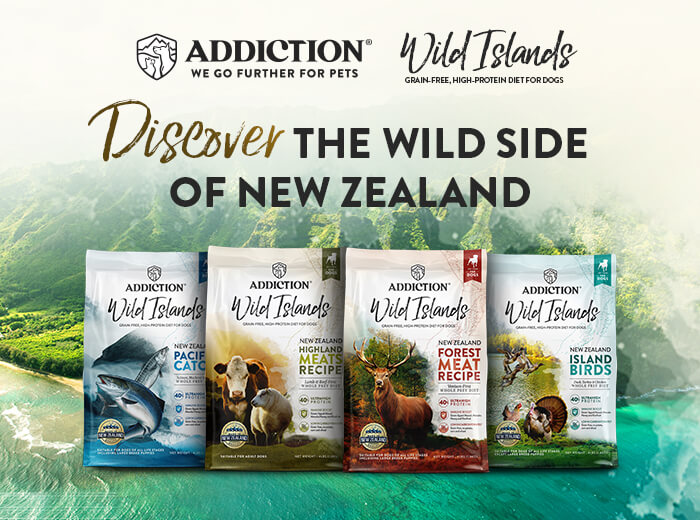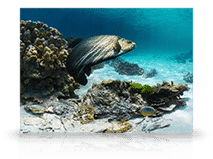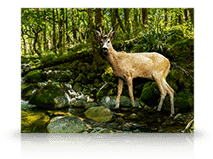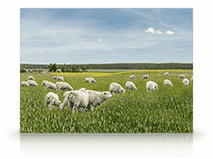Canine dilated cardiomyopathy (DCM) is a serious disease that causes inflammation of the heart muscle. For many years, it has been considered a genetic condition. However, recent reports suggest a potential link between taurine deficiency and grain-free diets with canine DCM.
When a dog has DCM, all the 4 chambers of the heart become dilated or enlarged. This pressure weakens the heart’s pumping and may cause the heart valves to leak, leading to fluid buildup in the dog’s chest or abdomen. In most cases, dogs with DCM won’t show symptoms until the disease has progressed into the late stages. Signs of DCM in dogs include: reduced exercise tolerance, abnormal heart sounds or irregular heart rhythm, coughing and excessive panting, lethargy, loss of appetite, swelling of the abdomen, and fainting.
Read on to know more about canine DCM and how you can prevent it.
Genetics and early screening of DCM in dogs
Genetics can play a role in canine DCM development. This is why it’s important to do early screening, especially if your dog is among the breeds at risk such as Doberman Pinschers, Boxers, Irish Wolfhounds, Great Danes, and Cocker Spaniels.
Dogs that are screened early for DCM can live for 1 to 4 years. Meanwhile, dogs that are already showing symptoms may survive for 6 to 24 months if given adequate medical care.
Screening tests for at-risk breeds include Echocardiography (ultrasound of the heart), 24-hour Holter monitoring (recording of dog’s heart rate and rhythm), and testing for natriuretic peptide levels (substances produced by the heart). If your dog has high brain natriuretic peptide (BNP) and N-terminal Pro-B-Type natriuretic peptide (NT-proBNP) in the bloodstream, it can be a sign of existing heart disease.
But while genetics is a factor in canine DCM, diet also influences its development. The United States Food and Drug Administration (USFDA), saw an increase in the number of DCM cases in breeds on a grain-free diet containing peas, lentils, potatoes, and legumes. Following the USFDA’s report, many believed that boutique, exotic, or grain-free (BEG) diets cause DCM. But there are no conclusive studies yet that can confirm this. The problem may not be what we are feeding our dogs, but what we aren’t.
Taurine’s role in cat and dog health
Evidence suggests that taurine is essential for normal cardiac function. For cats, The Association of American Feed Control Officials (AAFCO) requires a minimum amount of 0.1% taurine content in their diet. Because unlike dogs, felines can’t naturally produce this amino acid within their own body.
Dogs produce taurine by using two other amino acids: cysteine and methionine. They get these nutrients through quality animal protein sources like beef, lamb, salmon, venison, and kangaroo, among others. But even though dogs can synthesize taurine, some breeds are more prone to taurine deficiency.
To have your dog checked for taurine deficiency, ask your veterinarian to measure their plasma and whole blood taurine levels. According to the University of California Davis School of Veterinary Medicine, levels may vary depending on a case-to-case basis. But these are the suggested normal levels for each test:
- For whole blood: 200-350 nmol/ml
- For plasma: 60-120 nmol/ml
Choosing the right taurine-rich diet
While dogs usually get their protein from meat, this doesn’t mean that diets labeled as grain-free or peas, legumes, or potatoes as main ingredients, lack taurine.
A report from the UCI Beckman Laser Institute & Medical Clinic points out several potential factors that may decrease dog foods’ taurine levels:
- Use of low-quality protein, causing dietary deficiency of amino acids like cysteine and methionine
- Low bioavailability of taurine, cysteine, and methionine in the dog food itself
- Antinutritional factors that may affect protein digestion and nutrient absorption
- Altered nutrients due to food production and processing
- Maillard reaction or heat-damaged proteins and amino acids, thus substantially lowering the bioavailability of taurine in the food
What to do if your dog is taurine deficient and diagnosed with DCM
It’s best to consult your veterinarian about taurine supplementation for your dog and inquire about scheduling echocardiography every 3 to 6 months.
Unfortunately, a cure for canine DCM isn’t available yet. But with proper care and medication, you can help improve his quality of life. Planning to look out for a brand that meets your dog’s nutritional needs? Below are questions The UCI Beckman Laser Institute & Medical Clinic recommends you to ask.
- Do they have a veterinary nutritionist or some equivalent on staff in their company?
- Who formulates their diets, and what are their credentials?
- Which of their formula are tested using the Association of American Feed Control Officials (AAFCO) feeding trials?
- What specific quality control measures do they use to ensure the quality of their products?
- Where are their diets produced and manufactured?
- What is the caloric value per cup of their formula?
Go further for your dog’s heart health
You care about keeping your dog healthy, and so does Addiction Foods. We go further for pets by making heart-healthy, taurine-enriched food for dogs.
Dr. Jean-Paul Ly, a veterinarian and clinical nutritionist & the co-founder of Addiction Foods, recognized the correlation between dogs with dilated cardiomyopathy and taurine deficiency more than 10 years ago.
“Taurine supplementation for dogs has never been mandated by AAFCO. However, we at Addiction identified the need and pioneered the supplementation of taurine in our food since 2002. We have been adding taurine in all our dog foods ever since,” said Dr. Ly.
All Addiction dry and raw alternative dog food is rich in taurine and made with premium proteins sourced from the purest place on Earth – New Zealand. We gently bake our dry food at just the right temperature to kill off harmful bacteria while keeping the nutrients, like taurine, intact. Our unique process allows dogs to benefit from the nutrients that are naturally present in the fresh ingredients, aside from the added essential nutrients required by the AAFCO.
Try our taurine-enriched raw alternative food and dry food formulas for dogs today. For more pet health and nutrition updates, like us on Facebook and follow us on Instagram for more.











